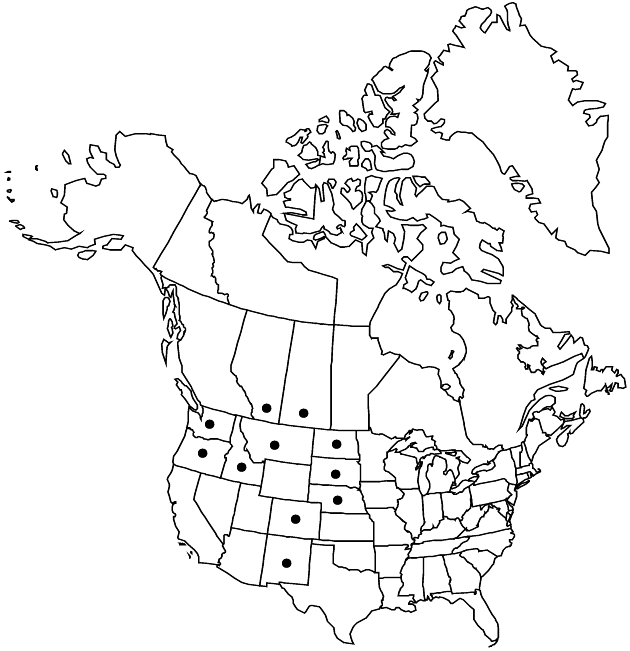Heterotheca villosa var. foliosa
Wrightia 4: 15. 1968.
Stems ascending to erect, 22–41(–58) cm, moderately to densely hispido-strigose, eglandular or sparsely stipitate-glandular, often abundantly long-hirsute. Distal cauline leaf blades oblong, rarely ovate, 11–28(–33) × 3.5–8.5(–9.7) mm, sometimes little reduced distally, bases rounded, margins flat, apices broadly acute to obtuse, faces moderately to densely hispido-strigose, (hairs sometimes obscuring faces, 25–59(–90) mm2), eglandular or sparsely stipitate-glandular. Heads 4–24(–35) in congested to open, corymbiforms arrays. Peduncles (9–)17–39 mm, moderately to densely hispido-strigose, eglandular; bracts subtending heads sometimes oblanceolate, leafy, often surpassing them. Involucres narrowly campanulate (fresh), 6–7.6(–8.6) mm. Phyllaries narrowly triangular-lanceolate, margins often reddish purple distally, faces moderately to densely strigose, eglandular to very sparsely glandular. Ray florets (7–)13–22, laminae 8–11.4(–12.4) mm (less showy). 2n = 18, 36.
Phenology: Flowering Jul–Sep(–Oct).
Habitat: Sandy shale and clay soils, sandy loam on sandstone, gypsum soils, crevices in granite and sandstone, loose talus slopes, stabilized dunes, dry coulees and flood plains, dry short-grass and semibarren prairies, grassy areas with scattered sagebrush, Ponderosa pine, aspen, and Cercocarpus, roadsides
Elevation: 600–2600 m
Distribution

Alta., Sask., Colo., Idaho, Mont., Nebr., N.Mex., N.Dak., Oreg., S.Dak., Wash.
Discussion
Variety foliosa is most common at the base of the Front Range in Colorado and Wyoming; it occurs scattered across the northern part of its range in the mountains and western prairies. Plants that are glandular but otherwise like var. foliosa are presumed here to be hybrids with either var. minor or var. nana. Variety foliosa is most similar to var. ballardii. V. L. Harms (2003) treated Saskatchwan plants as members of more broadly defined var. villosa.
Selected References
None.